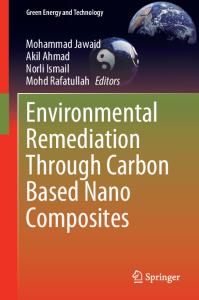Structure and Application of Flourinated Carbon Nanofibers
- PDF / 144,283 Bytes
- 4 Pages / 595 x 842 pts (A4) Page_size
- 70 Downloads / 395 Views
STRUCTURE AND APPLICATION OF FLOURINATED CARBON NANOFIBERS T. Hayashi, M. Terrones*, Y.A. Kim, T. Nakajima, and M. Endo Dept. of Electrical and Electronic Engineering, Shinshu University, 4-17-1 Wakasato, Nagano 380-8553, Japan *Now at: CPES, Sussex University, Brighton BN1 9QJ, England, UK
ABSTRACT High-resolution transmission electron microscopy (HRTEM) study of heavily fluorinated carbon nanofibers was performed under an ultra high voltage transmission electron microscope (UHVTEM). TEM observation showed rapid transformation of the disordered structure of fluorinated nanofiber to the cylindrical layer structure that is same as the non-fluorinated nanofiber. This observation suggests that electron beam irradiation helps fluorine atoms to dissociate from the carbon atoms. Li-ion secondary battery test cell using fluorinated nanofibers was prepared and the battery performance was tested as a function of cycling.
INTRODUCTION Recently, many reports on fluorinated nanotubes and fibers have appeared due to the interest in how the surface of carbon nanotubes can be modified to make various functional groups attachable [1,2]. Fluorinated nanotubes and nanofibers themselves are also useful for electrochemical application such as lithium ion batteries. In the present study, we report a high-resolution transmission electron microscopy (HRTEM) study on the fluorinated carbon nanotube and nanofiber. We also report battery performance tests of the fluorinated fiber-based lithium ion battery. The effect of electron beam irradiation to the structure of the fluorinated fiber was also studied.
EXPERIMENTAL Nanotubes and nanofibers were produced from benzene using metal catalyst similar to the process used in producing vapor grown carbon fibers [3]. The sample was fluorinated in the constant fluorine gas flow in a furnace for 19 hours at 823K. Fluorinated tubes and fibers used in this study had the white appearance showing that they were heavily fluorinated. High resolution TEM observations were performed in JEOL JEM-2010FEF equipped with omega filter and Gatan multiscan camera, and JEOL JEM-ARM1250 ultra high voltage TEM.
A14.18.1
1a
1b
1c
1d
Figure 1 Time sequence of high-resolution TEM image of the fluorinated nanofiber. 1a was rather disordered but as time passes, we can see that the layer structure is recovering. It is especially easy to find it at the outer part close to the surface.
RESULTS AND DISCUSSION Figure 1 shows the time sequenced UHVTEM image of fluorinated nanofiber right after the electron beam irradiation (Fig. 1a) and after several seconds (Fig. 1d) of electron beam irradiation. The disordered structure has already recovered to some extent during the focusing process of the TEM observation. The disordered structure quickly reorganized to the original layered structure of a non-fluorinated carbon fiber, or asreceived nanofibers. The recovery of the layered structure may be due to the dissociation of fluorine atoms from the graphene layers caused by the electron beam irradiation. Electron beam irradiati
Data Loading...











